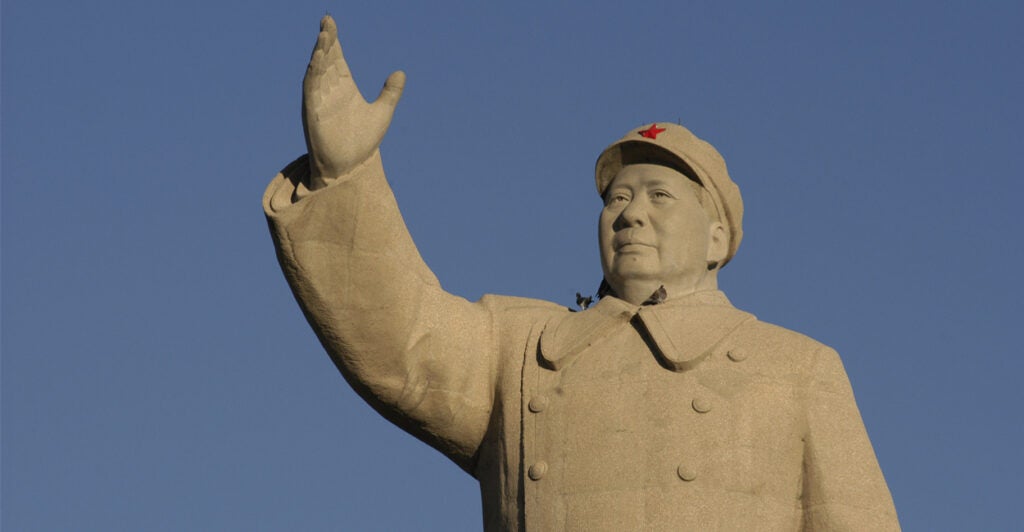When you look up “Why is history important?” on Google, the answer you are given is that “studying history allows us to observe and understand how people and societies behaved.” While history does indeed give us insight on the past, it also grants the ability to make inferences about the present and future. This is especially true about China.
Through studying the past, history serves another important purpose: to prevent previous mistakes from being made again. In China’s case, this reason carries extreme significance. President Xi Jinping’s Chinese Dream of the “great rejuvenation of the Chinese nation” by 2049 is an endeavor to regain what China lost in the 19th century, and in this way, also a way of correcting past errors.
It all began with Great Britain’s triumph over China during the First Opium War from 1839 to 1842, which culminated in the first of the unequal treaties, causing China’s relinquishment of Hong Kong to the British. And it all went downhill from here. For the next 100 years during the so-called Century of Humiliation, (lasting from 1839 to 1949), China’s history was marked by corruption, rebellion, famine, poverty, and fiscal struggle.
As Western powers, through their intervention and subjugation, were to blame for China’s “stolen” imperial greatness, a new mentality of anti-Western sentiment emerged. Newspaper articles, history books, and television broadcasts perpetuated and memorialized this anti-Western sentiment and pain of losing both territory and power.
Sun Yat Sen, the nationalist revisionary known as the father of modern China, sparked the desire to return to “the China that once was” and recoup the “lost lands,” ingraining a longing for military security, fear of falling to foreign powers, and need for economic dominance in the ambitions of the Chinese state.
Inherently, in order to prevent foreign intervention and ensure security, a strong military is critical. Without the sturdy foundation of a powerful and effective military, all governmental, economic, technological, and diplomatic aspirations are impossible.
Recognizing that military defeat prompted the beginning of the Century of Humiliation, Chinese officials prioritized military advancement. Since 1949, China’s military has transformed from a state of weakness to one of the strongest militaries in the world.
China’s military now poses a dangerous threat to the nations it once was vulnerable to; even the most powerful militaries in the world classify Beijing’s People’s Liberation Army as a threat. Through constant military modernization and advancement, China has ensured that Xi’s goal of having a military “capable of fighting and winning wars” has been achieved.
However, Xi classifies all of these such enhancements as solely for defensive purposes, seemingly an effort to ensure China never falls to military vanquishment again.
China not only fears inferiority to foreign powers militarily, but also in trade. While almost a century ago trade in China wrought violence, chaos, and widespread addiction to opium, now China is at the top of global trade.
Due to advantages like the low cost of labor, land, and capital, China established itself as “The World’s Factory.” With an estimated $2,641.27 billion, 18.42% of gross domestic product, worth of exports, China is the world’s largest exporter of goods (including in lucrative industries like computers and telecommunications equipment).
Striving for global dominance in high tech, China only hopes to grow its already substantial number of exports, following through with the “Made in China 2025” plan for China to become a “manufacturing superpower.”
Not only does China supply necessary goods to nations across the globe, but also avails itself of the global supply chains. In reference to a time of ancient splendor, Xi’s Belt and Road Initiative aims to connect Asia with Africa and Europe through land and maritime networks with the objectives of expanding trade, fostering economic development, and bettering regional connectivity.
In this way, the Belt and Road Initiative serves as the modern rendition of the Silk Road, and once again places China as the Middle Kingdom and center of international trade.
Despite a shift toward global integration through the Belt and Road Initiative, China, still haunted by its past, remains wary of relations with foreign powers. In response to the United States breaking off particular Chinese companies’ access to high-end semiconductors (a vital constituent in many technologies), China’s 14th Five-Year Plan, promulgated in March 2021, stresses an increasing necessity for self-reliance in the technology and science sectors.
A key element of Beijing’s pursuit of self-sufficiency is a “dual circulation” economic strategy, which seeks to reduce dependency on foreign markets.
Although China has seized dominance of trade and succeeded in military prowess, China has yet to gain redemption on the territory it claims to have lost during the Century of Humiliation. Despite talking about peace with its neighbors, China’s territory grabs nurture disputes with a range of neighbors, not least of whom are Taiwan, Japan, and countries bordering the South China Sea.
While the sources of China’s behavior cannot be reduced to one factor—ideology, domestic political maneuvering, and economics are all important—one thing is clear: China is intent on never repeating the mistakes of its past, especially those that led to the Century of Humiliation.
Even though the wrongs suffered in the past are often used to rationalize China’s current poor behavior, it would be wrong to dismiss them as propaganda. They resonate too well. That’s why the regime resorts to them.
Have an opinion about this article? To sound off, please email letters@DailySignal.com and we’ll consider publishing your edited remarks in our regular “We Hear You” feature. Remember to include the URL or headline of the article plus your name and town and/or state.
